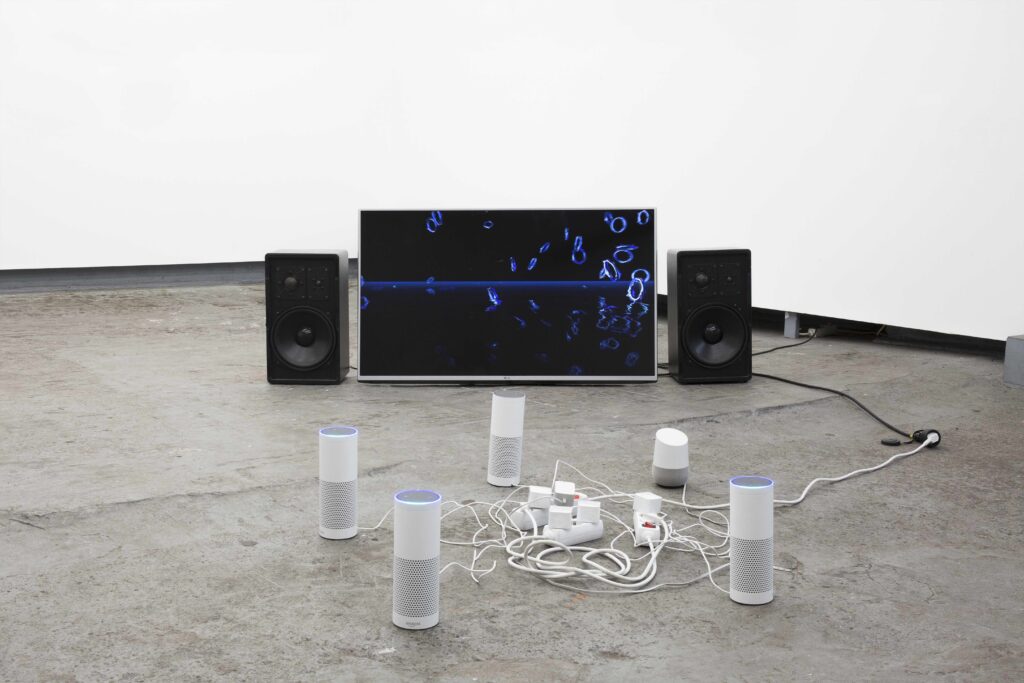A roundtable discussion concluding Data / Set / Match, a programme exploring the crucial role of photographic datasets in the development of machine vision and artificial intelligence.
While the first symposium, What Does The Dataset Want?, focused on the significance of the digitised image, this conversation will consider the acts of closely looking and working with datasets. Analysing the ways in which data has been collected, configured and signified, the event aims to help understand how the rise of machine learning is both exacerbating and unveiling inherited historic structures of power
This discussion will first consider the scale, accessibility and politics of image datasets that the artists experienced while working on their projects. Following this, the conversations will widen to a broad set of questions around datasets, looking, labour, language, categorisation, parameters, precarity, and futures.
Speakers include:
Philipp Schmitt, artist, designer and researcher.
xtine burrough, media artist and educator
Sabrina Starnaman, a professor at humanities department at The University of Texas at Dallas US
Everest Pipkin, drawing and software artist
Ramon Amaro, lecturer in Art and Visual Cultures of the Global South, Department of History of Art, UCL
Nicolas Malevé, visual artist, computer programmer and data activist.
And more to be confirmed.
Recommended readings
An Introduction to Image Datasets, Nicolas Malevé
On Lacework: Watching and entire machine-learning dataset by Everest Pipkin
Recovering Lost Narrative In Epic Kitchens, by xtine burrough and Sabrina Starnaman
Tunnel Vision, by Philipp Schmitt
Biographies
Everest Pipkin is a drawing and software artist currently based in Pittsburgh, Pennsylvania who produces intimate work with large data sets. Through the use of online archives, big data repositories, and other resources for digital information, they aim to reclaim the corporate internet as a space that can be gentle, ecological, and personal.
xtine burrough is a new media artist. She regularly participates in international festivals of digital art and has authored or edited several books including Foundations of Digital Art and Design (2013, 2nd Edition 2019), Net Works: Case Studies in Web Art and Design (2011), and The Routledge Companion to Remix Studies (2015). She is Professor in The School of Arts, Technology, and Emerging Communication at UT Dallas.
Sabrina Starnaman is Associate Professor of Instruction in Literary Studies. Her research focuses on Progressive Era (1880-1930) American texts about social settlements and women’s activism, urbanism, and disability. Dr. Starnaman’s research explores how nineteenth-century activists remediated exploitative labor practices, racism, and poverty. She is interested in finding ways that their historical solutions, often implemented locally, can be brought to bear on similar problems in the twenty-first century.
Philipp Schmitt is an artist, designer, and researcher based in Brooklyn, NY. His practice engages with the philosophical, poetic, and political dimensions of computation by examining the ever-shifting discrepancy between what is computable in theory and in reality. His current work addresses notions of opacity, and the automation of perception in artificial intelligence research.
Dr Ramon Amaro is Lecturer in Art and Visual Culture of the Global South at UCL. He is a former Research Fellow in Digital Culture at Het Nieuwe Instituut in Rotterdam and visiting tutor in Media Theory at the Royal Academy of Art, The Hague, NL (KABK) and thesis at Design Academy Eindhoven (DAE). Dr Amaro completed his PhD in Philosophy at Goldsmiths, while holding a Masters degree in Sociological Research from the University of Essex and a BSe in Mechanical Engineering from the University of Michigan, Ann Arbor. He has worked as Assistant Editor for the SAGE open access journal Big Data & Society; quality design engineer for General Motors; and programmes manager for the American Society of Mechanical Engineers (ASME). His research interests include machine learning, the philosophies of mathematics and engineering, Black Study, computational reason, and philosophies of being. Dr Amaro is under contract from Sternberg/MIT Press to write a monograph on machine learning, race, and the philosophy of being, provisionally titled Machine Learning, Sociogeny and the Substance of Race. He is also co-founder of Queer Computing Consortium (QCC), which investigates the “languages” of computation and its role in shaping locally embedded community practices.
Nicolas Malevé is a visual artist, computer programmer and data activist who lives and works between Brussels and London. Nicolas is currently working on a Phd thesis on the algorithms of vision at the London South Bank University. He is a member of Constant and the Scandinavian Institute for Computational Vandalism.








